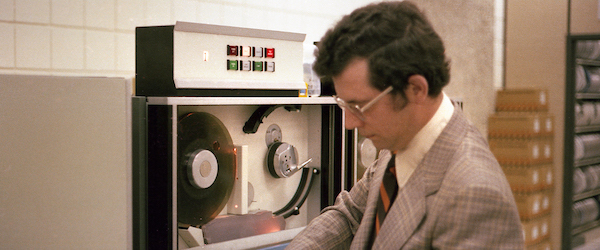APPENDIX H
A PROPOSAL FOR THE ESTABLISHMENT OF A DEPARTMENT
OF COMPUTER SCIENCE AT UNIVERSITY OF
SASKATCHEWAN, REGINA
(Revised, October 22, 1968)
-
INTRODUCTION
Following a preliminary discussion of members of an ad hoc Committee of Council Members convened under the chairmanship of Dr. Van Cleave (Graduate Studies) to investigate the development of a Department of Computer Science on this campus, further discussions were held within the meetings of the Computer Centre Advisory Committee, which is a user representative body advising and recommending on policy with respect to the use of the Computer Centre.
The Computer Centre (Director, Professor P. F. Gross) has been in formal existence since 1965, when an IBM 1620 was installed, and at this moment, houses an IBM 1130 system, to be replaced by an IBM 360/40, with terminals, in April 1969. The Centre, in the academic year 1967-68, offered to students a total of four (4) non-credit classes in FORTRAN, and one (1) non-credit class in APL which is an interactive, interpretive terminal language used by the IBM 360/67 system at the University of Alberta, to which this campus has been hooked, using an IBM 2741 terminal, since June 1968. These classes were given by the Director and by a senior programmer at the Centre. In addition, two programming classes were given to interested faculty, one in FORTRAN and one in APL.
It is obvious that as the number of computer classes on campus is increasing (by 100% in 1968-69), and that as the Computer Centre is strictly a service facility with no charter to give classes, the time has arrived to instigate a separate Department of Computer Science, with staff qualified to teach the academic credit classes required on a full-time basis.
Another factor relating to the desirability of formation of such a Department is the growing realization that rationalization of the present credit course offerings in the various fields of computer science, at present residing within the Faculty of Administration and the Department of Mathematics (where a Computer Science option can be taken in the last year of an Arts degree), should occur in view of continuing staff and financial shortages.
A final factor is related to the growing impact of the use of the computer in the social sciences and humanities, and not only in its use as a computational tool in the research methodology of these areas. In any university that adheres to liberal arts philosophies, there is a dire need, in a world where automation is (insidiously some would say) increasing, to inform and educate students in the natural sciences, social sciences, humanities, professions and the technologies to understand, live in and adjust to an environment that is automating and mechanizing.
-
THE POSITION OF COMPUTING SCIENCE IN THE UNIVERSITY
For some time now, there has been considerable controversy on the position of Computer Science in any university structure.
The problem is basic: “The discipline has a clear theme, but so far, only a fragmentary theory.”* The discipline had its roots in departments of mathematics and schools of electrical engineering, and yet, some academics (Perlis in particular) consider that “ … computer programming is at the root of computer science — not machines, not algorithms, not recursive function theory, not mathematical linguistics; these are formal bases that support computer programming …”
The fact remains that once any discipline has a reasonable structure, the rational planning of further development is desirable and since such planning affects both the course and the rate of development, the optimal organizational setting should be sought. Information Science or Computer Science has achieved such a structure, and a rational planning is now possible.
There is nearly unanimous agreement that Computer Science is now accepted as a separate academic discipline. (Vide the opinions given at a workshop at SUNY at Stony Brook in June 1967). The most serious problem is to relate the level at which Computer Science is introduced to the students. Historically, the graduate level has been the setting, but there is now a realization that:
- such a level ensures that only the select percentage of graduate students benefit.
- there is reason to suspect that the comparative youth of Computer Science and the initial reactions to its merits, compounded with the lack of qualified teachers to expound on the relevant courses, may have forced Computer Science into the curriculum at too exalted a level.
- there is an increasing need for trained computer professionals, and given the University role in the education of professionals (and possible future academics), the undergraduate level is the level at which Computer Science education should be concentrated at this time. (In future years, it is conceivable that some courses might be taught at secondary school level).
- there is a growing trend to set up service classes in computer science, particularly applications, for other disciplines in the University, and to base these classes in a Computer Science curriculum, cross-listed with the relevant discipline curriculum, and taught by persons holding joint appointments in the Department of Computer Science and in the department of the relevant discipline. These joint appointments are particularly common in Medicine, Engineering, Education, Mathematics, Business Schools and to a lesser extent, Social Sciences.
* In Finerman, A. University Education in Computing Science; Academic Press, 1968.
